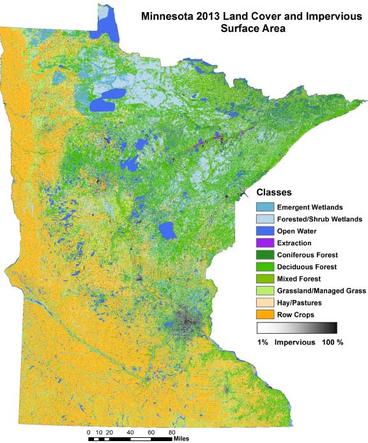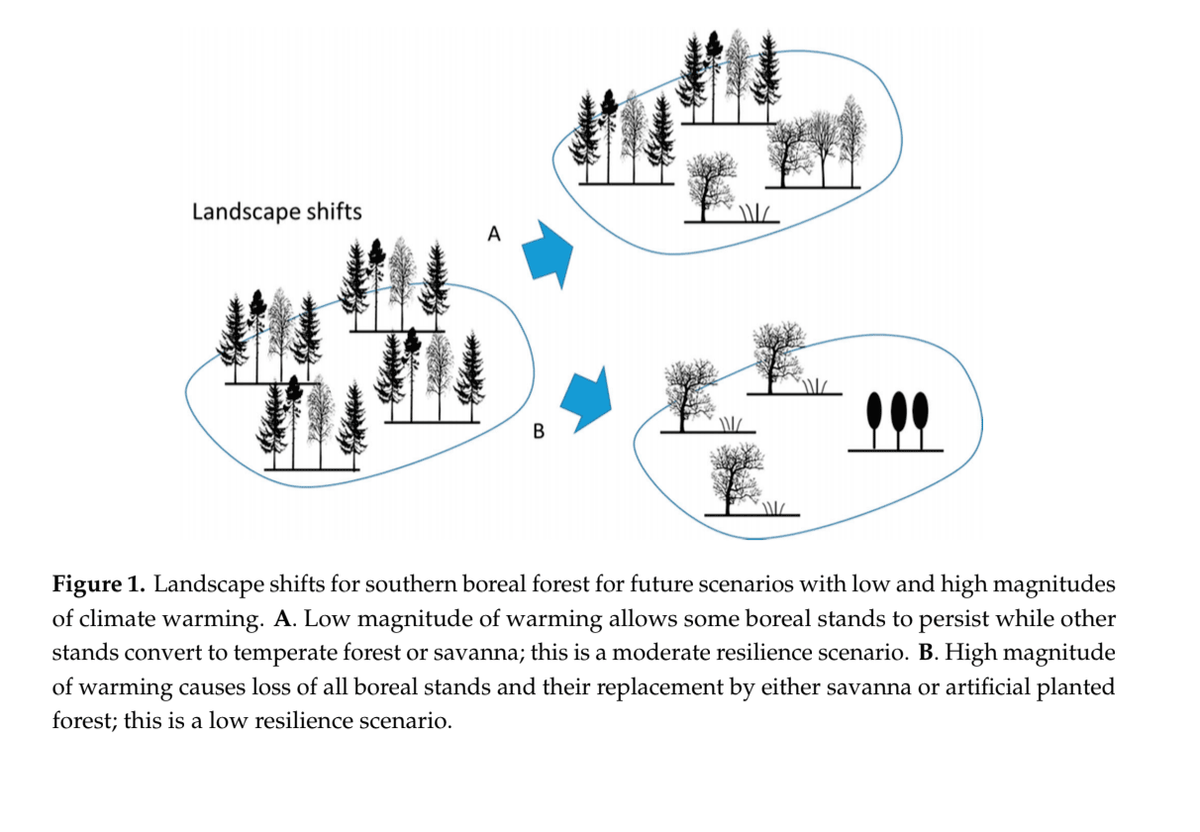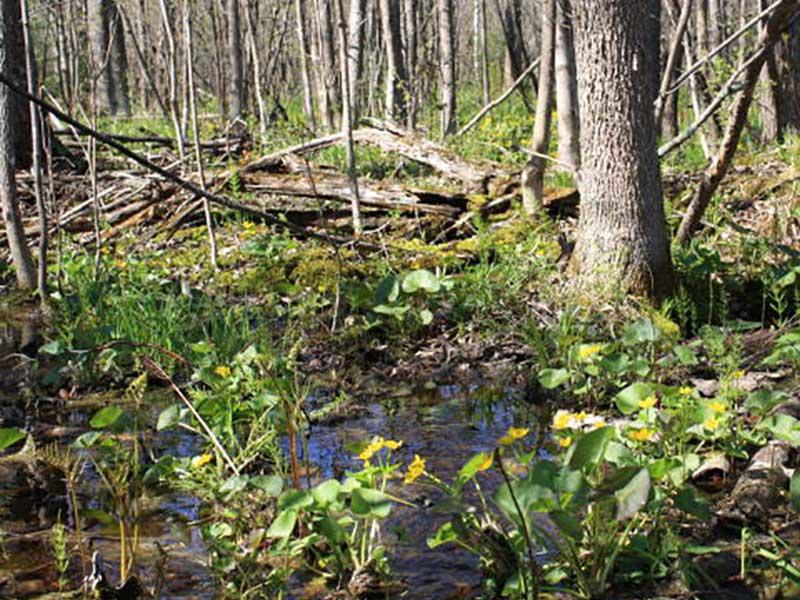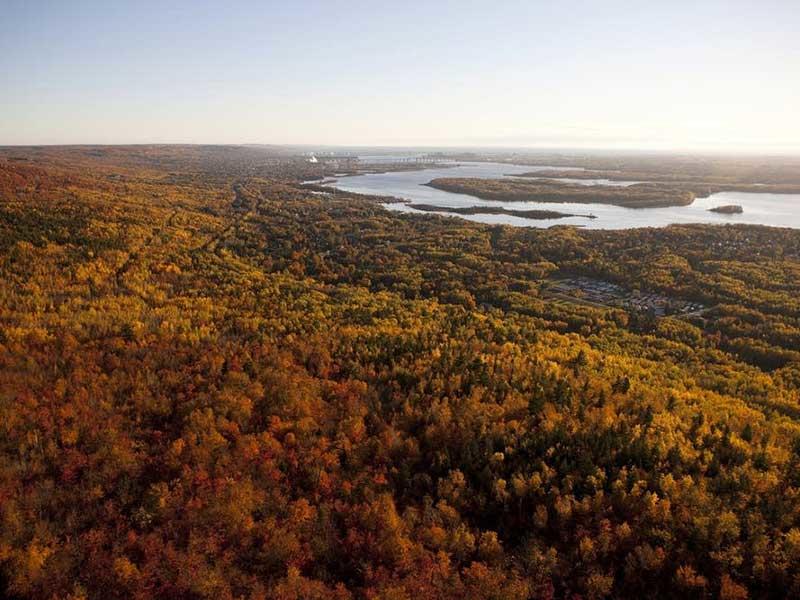Our Changing Forests & Ecosystems
Forests
Minnesota's forests play a critical role in the economy, culture, and climate of the state. Approximately 18 million acres, or one third of the state's land area, is forested. The forestry industry is Minnesota’s 5th largest manufacturing sector, contributing 67,956 jobs and $7.3 billion to the state in 2020. In addition, the northern forested areas of Minnesota attracted over 9 million visitors in 2016 and contributed $2.25 billion to the tourism industry. Forests are also a natural climate solution as they store carbon dioxide. In the US, approximately 11% of our carbon dioxide emissions are offset by forests.

In the eastern U.S., including Minnesota, over 70% of northern tree species are already shifting further northward. One study estimates that these species will continue migrating, and that the rate of migration could increase, reaching 100 km per century. Some parts of the country, like the Green Mountains in Vermont, have already seen a shift away from boreal forests toward northern hardwood. In Vermont, the trees accommodate warming temperatures by moving to higher altitudes. In Minnesota, where the land is flat and moving to higher altitudes is not an option, trees must move to higher latitudes. This is more difficult and makes it more likely that the forest ecosystem's suitable range will get smaller.

(courtesy of University of Minnesota)
Wildfires, floods, and pest outbreaks, like the eastern larch beetle, are likely to become more frequent and more severe as a result of climate change. How Minnesota's forests fare with climate change will depend both on what kind of trees are in the forest and how diverse the ecosystem is: diverse ecosystems will fare better, as will forests that can tolerate heat and variable water levels. Ecosystems with low species diversity are at the greatest risk: they are less tolerant to drought and temperature increases, and less resilient to large disturbances. In general, boreal forests face the greatest threats from climate change, while temperature species are expected to fare best.

(Figure: Freilich, et al. 2020)
Ecosystems
Climate change does not only affect individual trees, it affects entire ecosystems. Warming temperatures, for example, can change the timing of when plant species bloom, which affects the animals that feed on those plants, in some cases creating a "mis-match" in seasonal cycles between species. Warming temperatures might also affect the distribution of animal species on land and in water: land-based animals can migrate northward as the southern extents of their ranges become too warm, but aquatic animals aren't so mobile. As lake temperatures warm across the state, some lakes will simply become too warm for certain species of fish. Minnesota walleye fish spawn when the water is between 42 and 50 degrees Fahrenheit, a temperature range that southern lakes might regularly exceed with climate change.
Some iconic Minnesota species, such as moose, walleye, and trout, are already feeling the effects of climate change. The northern Minnesota moose population declined by 52% from 2010 to 2013 due to pressure from pests such as ticks and lice during the warming winters and stressors such as heat in the summer. Meanwhile, badgers and raccoons have been observed in northern reaches of the state such as Voyageurs National Park, where they weren't observed before.
Consequences
References & Suggested Reading
Beckage, B., et al., 2007: A rapid upward shift of a forest ecotone during 40 years of warming in the Green Mountains of Vermont. Proceedings of the National Academy of Sciences, 105, 11. doi:10.1073/pnas.0708921105.
Decision Innovation Solutions, 2020. "Economic Contributions of Minnesota Agriculture and Forestry." URL.
Freilich, et al., 2020: Are Secondary Forests Ready for Climate Change? It Depends on Magnitude of Climate Change, Landscape Diversity and Ecosystem Legacies. Forests, 11, 965. doi:10.3390/f11090965.
Friesen, et al. 2020: Climate change and Minnesota's forests: a report prepared for the Minnesota Forest Resources Council by the Research Advisory Committee. Report. URL.
Handler, S., et al., 2017: Climate change field guide for northern Minnesota forests: Site-level considerations and adaptation. USDA Northern Forests Climate Hub Technical Report #2. URL.
Handler, S., et al., 2014: Minnesota forest ecosystem vulnerability assessment and synthesis: a report from the Northwoods Climate Change Response Framework project. Report. URL.
USGCRP, 2018: Impacts, Risks, and Adaptation in the United States: Fourth National Climate Assessment, Volume II [Reidmiller, D.R., C.W. Avery, D.R. Easterling, K.E. Kunkel, K.L.M. Lewis, T.K. Maycock, and B.C. Stewart (eds.)]. U.S. Global Change Research Program, Washington, DC, USA, 1515 pp. doi: 10.7930/NCA4.2018.
Woodall, C.W., et al., 2009: An indicator of tree migration in forests of the eastern United States. Forest Ecology and Management, 257, 1434-1444. doi:10.1016/j.foreco.2008.12.013.
Woodall, C..W., et al., 2014: Using forest inventory analysis to detect tree migration in response to climate change. U.S. Department of Agriculture, Forest Service, Climate Change Resource Center Report. URL.


